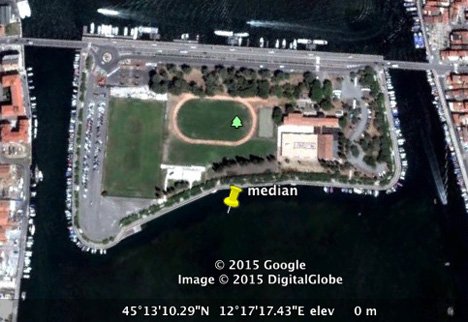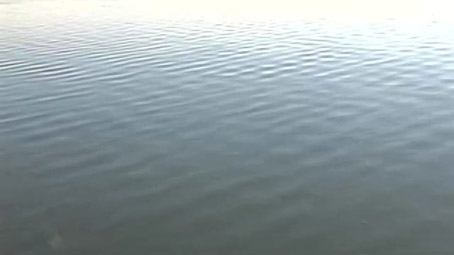2.4.1 - Introduction to a research on tides in its early days.
According to current theory, tides are due to gravity, despite the inconstencies between reality and current theory, starting from the formula.
===============================================================
© copyright notice ||| français ||| italiano
prologue > index tides > 2.4 How this research on tides started.
2.4.0 - Title, subtitles, content, notice.
>2.4.1 - Introduction to a research in its early days.
2.4.2 - Problems to be solved.
2.4.3 - A force not considered.
2.4.4 - The attention shifts to water.
2.4.5 - Hunting for discontinuous events.
2.4.6 - The water figures.
2.4.7 - Problems of perception.
2.4.8 - Perspectives.
===============================================================
The cause is not manifest.
Rather than say we do not know, they have attributed the cause of the tides to attraction, although the formula already indicates that it is not. The tide argument was closed, settling for saying that the difference in the formula is an exception.
Years ago, the topic was reopened by you, in order to finally understand the real reason of the difference in the formula.
To other researchers, the task of judging if you did it.
Your hypothesis to be proved.
The tides would be due to the variation of the volume occupied by the water through cumulative-dissipative processes.
You didn't start from a clean slate.
You started from the results of one of your searches, the one which finds application in agriculture, useful to increase crops, by taking advantage of the fact that the seeds use the cumulative dissipative cycle in order to maintain their ability to germinate for a long time, and also to recover it (see part 1 on seeds).
For this purpose, the seeds make use of a force, which is a consequence to the matter around, like gravity, but which is not gravity.
As a matter of fact, it differs from gravity not only in the formula (to be defined), but also in the discontinuity of action, in the functions, and because it requires coherent heat exchanges to be operational.
You call this force by the way it is generated, “force due to motion relative to other matter”, force d for short. It reveals itself in discontinuous events; in fact, it operates at critical values of angular velocity.
So, it is operative only during short episodes of interaction, and moreover, only if accompanied by heat exchanges, either in accumulation of energy towards the seeds, if their relative movement is increasing, or in dissipation if that movement is decreasing.
Extending the same research to water.
You have glimpsed the possibility that even water could make use of the cumulative-dissipative cycle, activated by the same force, at critical angular velocities with regard for instance to the Moon, during discontinued episodes.
In order to proceed on this hypothesis, you needed to collect evidence of discontinuous water behaviour, during short episodes of interaction, as you had seen in the seeds.
Consequences.
At the beginning, from the fact that water is a liquid, thus molecules in motion, you infer the following possible consequences from what happens in the seeds:
(1) in general, only a few molecules may be involved in cumulative-dissipative processes, at the same critical value of angular velocity, relative to other matter, at the same time;
(2) said processes in water may take place at any time, in both senses, cumulative and dissipative, not in alternate periods, as it happens instead in the seeds, still on the ground;
(3) while the final effect (the tides) becomes manifest, not so the effect of the individual processes, which happen just a bit at any moment, almost continuously, with no visible contrast.
Hypothesis.
Following on from what has just been said, you supposed that the tidal phenomenon was due to cumulative dissipative processes, that these were usually not manifest, but that they could be detected as much as the water is still, at the time of observation, thus approaching, to some extent, what happens in the seeds stuck to the ground.
Observatories to validate the hypothesis.
Later, you found that this may occur in places similar to the Lusenzo lagoon, between Chioggia and Sottomarina, near Venice. It’s a sort of natural astronomical observatory to see how the tides are generated.

The water, having to flow towards the sea through two lateral channels, it is as if uncertain which channel to take. In practice, its level drops very slowly, but does not move; as compressed, it stands still for hours. This will be considered at page 2.2.6, and also, in another itinerary, at page 2.3.3.
Making the process of the tide variation evident.
There are at least three conditions for making tidal variation processes manifest.
The water movement must be as reduced as possible during observation /recording.
The second condition is that the recovery of the Moon's delay, relative to the rotation of the Earth, completed during a sidereal month, must be at one of the critical angular velocities, specific to the water molecule.
Once the first two conditions have been fulfilled, everything depends on the variation of said angular velocity per hour, and thus the duration of time when the cumulative dissipative processes may take place, at one of the critical values of angular velocity.
The less the said velocity varies, the more the processes take place in large numbers, all other variables being equal, making the phenomenon of the variation of the tide manifest: water varies its density, and its volume.
Thermal exchanges.
Another condition is that water must not be stagnant, not at a uniform temperature to favor the thermal exchanges of the cycle. However, part of non uniformity in temperature is ensured precisely by the continuous unfolding of the cumulative dissipative processes.
The unfolding of the cycle may take the form of various water figures, such as more or less regular and geometric protuberances.

How to perceive the phenomenon.
When the phenomenon is amplified, it takes the form of water protuberances. When it is very amplified, it takes the apparent form of water waves, which keep changing their density, in both directions. You call them “density waves” (subject treated in itinerary 2.5 - page 2.5.6).
There are problems for us to perceive them. This is because they are, for a given observer, completely unexpected, and in contrast with his experience.
In fact, in the absence of one of the known causes that produces waves, such as wind and passage of a vessel, the observer does not perceive them, because, for the moment, the thing is not in the baggage of his experience. You see what is consistent with what you already know.
Perception problems, along with the threshold of acceptation, decrease if the phenomenon is seen on a camera monitor, at the time of recording, or later, observed in a video.
This is because the mind, in default, in addition to what it sees in the video, assumes that there are causes, even if it does not perceive them.
It is appropriate to specify that, the possibility of perceiving it, varies from person to person, both when you watch it directly, and when it is by means of a video.